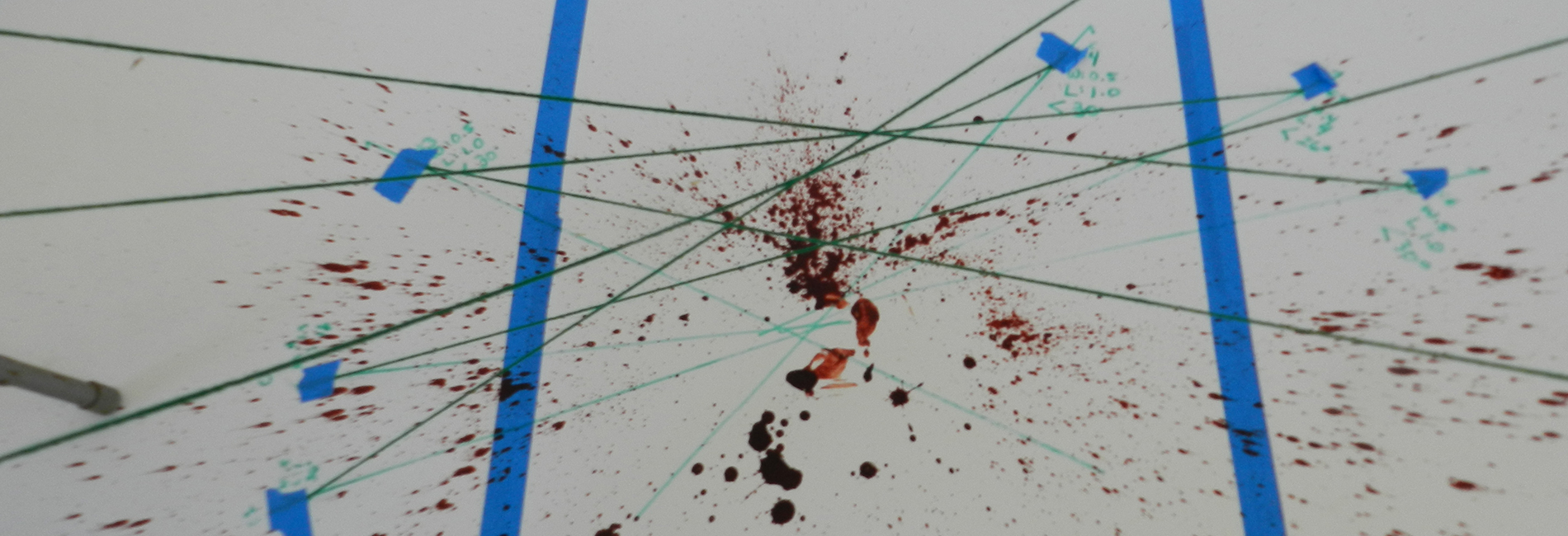The first documented case of Forensic Blood Pattern Analysis is in the bible when Cain slew Able. In the story, the bible tells us that as Jesus walked upon the scene he could see Able’s blood even though no one else could. Ironically with modern forensic tools this is possible. Tools like an alternate light source and chemical enhancement make blood visible to the trained analyst when it is not visible to the naked eye. Properly interpreted bloodstain pattern analysis at crime scenes and accident scenes can tell the story of what occurred more accurately than witnesses to the crimes. Bloodstain patterns can provide where events occurred, what occurred, how the events occurred, and what type of weapon was used.
SRI’s crime scene reconstruction team, Shelly Rice and Jeremy Woods are both trained in interpreting and have expertise in blood pattern analysis which can provide detailed information about the origin of impact, such as a gunshot wound verses a stabbing. Such information can show, for example, where a victim was located, where the perpetrator was located and possibly if there were any witnesses present.
This expertise and knowledge is, in many cases, crucial to determining what occurred and how it occurred. SRI has been involved in numerous cases where this area of expertise was the deciding factor in the case.


